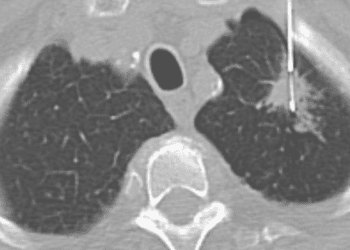Intracerebral hemorrhage risk factors and risk factor burden may differ across racial groups
1. Risk factors for intracerebral hemorrhage (ICH), such as hypertension (treated and untreated) and lack of medical insurance, disproportionately burdened Black and Hispanic individuals over White individuals.
2. Sleep apnea may be a potential new risk factor for lobar and nonlobar ICH.
Evidence Rating Level: 3 (Average)
Study Rundown: Intracerebral hemorrhage (ICH) is a type of stroke that carries a high mortality rate. Recent evidence suggests that Blacks and Hispanics have a higher risk of ICH compared to Whites. This prospective, case-control study evaluated the prevalence, odds ratio, and population attributable risk (PAR) of known and novel risk factors of ICH; these risk factors were assessed across ICH type, location, and racial group (White, Hispanic, and Black individuals). Firstly, ICH occurred at a significantly younger age among Black and Hispanic patients compared to White patients (approximately ten years earlier). Among established risk factors for ICH, treated and untreated hypertension and a lack of health insurance were more often associated with ICH development in Black and Hispanic patients than White ones. The APOE e2 and APOE e4 alleles were associated with higher risk for lobar ICH in Whites, but not in Black or Hispanic individuals. Unexpectedly, hypercholesterolemia was associated with a reduced risk for ICH, even though it is a well-established risk factor for cardiovascular disease. Notably, obstructive sleep apnea (OSA) was a new risk factor for ICH, which was observed across all three racial groups. Overall, this study presented both established and unknown risk factors for ICH and demonstrated how the burden of certain risk factors, such as hypertension and lack of health insurance, affect some racial groups more than others. One limitation, however, is that the nature of this study (case-control) does not allow causal relationships to be established between risk factors and ICH.
Click to read the study in JAMA Network Open
Relevant Reading: The incidence of deep and lobar intracerebral hemorrhage in whites, blacks, and Hispanics
In-Depth [case-control study]: This multicentre, prospective study recruited 1000 ICH participants from three races (White, Black, and Hispanic) and 1000 control participants from each group to total 6000 participants. Participants were enrolled from 42 United States hospitals from September 2009 to July 2016. The primary outcomes were prevalence, odds ratios, and PARs for each risk factor, stratified among racial groups and ICH types. Hypertension is a significant risk factor for ICH. Among Black and Hispanic participants, PAR percentages for treated hypertension were 53.6% (95% CI: 46.4-59.8) and 46.5% (95% CI: 40.6-51.8), respectively; in comparison, White participants had a PAR percentage of 26.3% (95% CI: 17.8-33.8). Additionally, PAR percentages among Black and Hispanic patients for untreated hypertension were also higher compared to their White counterparts. PAR percentages for lack of medical insurance were 21.7% (95% CI: 17.0-25.7), 30.2% (95% CI: 26.1-34.1), and 5.8% (95% CI: 3.3-8.2) among Black, Hispanic, and White patients, respectively. High sleep apnea risk demonstrated an overall OR of 1.68 (95% CI: 1.36-2.06) and 1.62 (95% CI: 1.37-1.91) for lobar ICH and nonlobar ICH, respectively.
Image: PD
©2021 2 Minute Medicine, Inc. All rights reserved. No works may be reproduced without expressed written consent from 2 Minute Medicine, Inc. Inquire about licensing here. No article should be construed as medical advice and is not intended as such by the authors or by 2 Minute Medicine, Inc.







